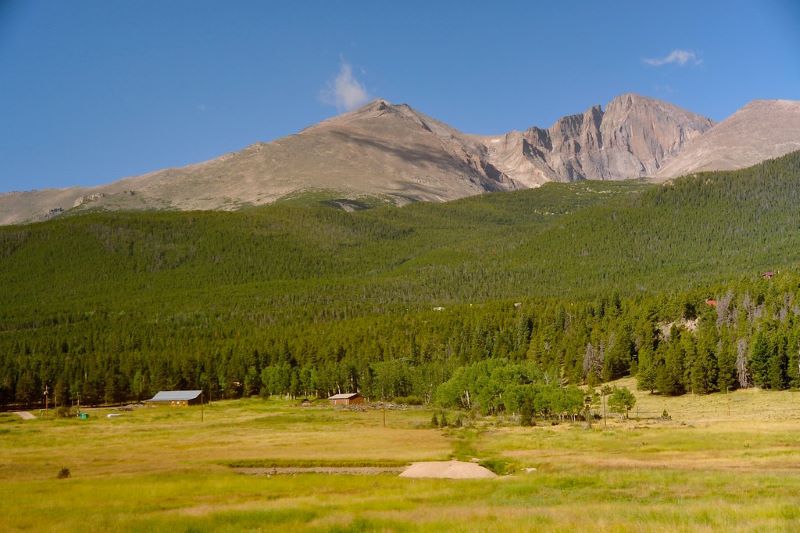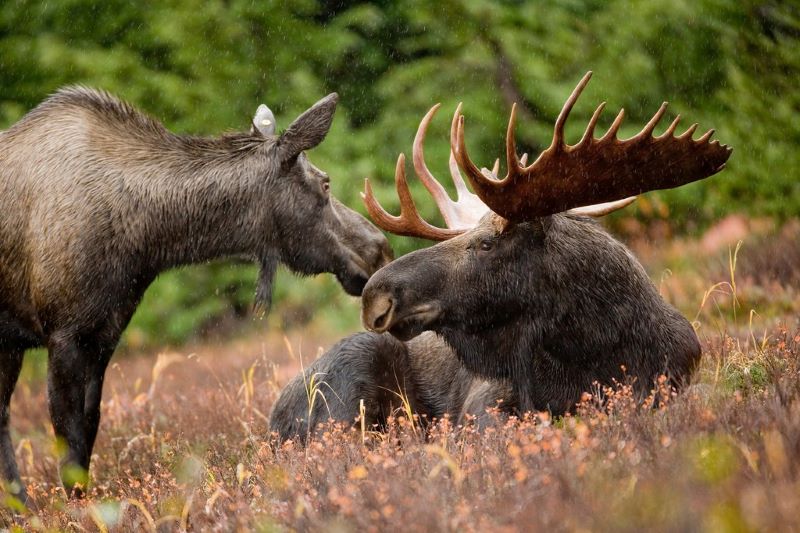Grades 6-8
Below are lesson resources that target Next Generation Science Standards Performance Expectations from grades 6-8.
Looking at Vegetative Growth and Elevation

Image: faungg - licensed under the CC Attribution-NoDerivs 2.0 Generic license.
Grade Level: 6-8
Performance Expectation Connections:
MS-LS1-4. Use argument based on empirical evidence and scientific reasoning to support an explanation for how characteristic animal behaviors and specialized plant structures affect the probability of successful reproduction of animals and plants respectively.
MS-LS2-4. Construct an argument supported by empirical evidence that changes to physical or biological components of an ecosystem affect populations.
Science and Engineering Practices: Engaging in Argument From Evidence; Analyzing and Interpreting Data
Crosscutting Concepts: Patterns; Cause and Effect
Disciplinary Core Ideas: Adaptation; Interdependent Relationships in Ecosystems; Ecosystem Dynamics, Functioning, and Resilience; Biodiversity and Humans
Possible Guiding Questions: Why is there a treeline? How can certain areas have similar climate but very different vegetation? How have different plants adapted to different elevations? How might climate change impact vegetation patterns on mountains?
Possible Instructional Uses: You may use this phenomenon to explore the relationship between environmental conditions and elevation, life zones, adaptations to different ecosystems, and climate change’s impact on vegetation.
Contributors: Martha Inouye, Clare Gunshanen, Sienna Wessel, Matthew Bisk
Date Uploaded: 11/11/21
Global Patterns of Desert Formation

Image: John Coppi, CSIRO - licensed under the CC Attribution 3.0 Unported license.
Grade Level: 6-8
Performance Expectation Connections:
MS-ESS2-6. Develop and use a model to describe how unequal heating and rotation of the Earth cause patterns of atmospheric and oceanic circulation that determine regional climates.
Science and Engineering Practices: Developing and Using Models
Crosscutting Concepts: Patterns; Systems and System Models
Disciplinary Core Ideas: Weather and Climate
Possible Guiding Questions: How can Wyoming and Australia have similar vegetation despite their distance apart? How do temperature and precipitation impact plant communities? Why do deserts form in certain locations around the globe?
Possible Instructional Uses: You may use this phenomenon to primarily investigate desert communities around the globe and the large, climatic patterns that impact biome formation. This lesson may also serve as a jumping off point for exploring differences in weather in the Northern and Southern Hemipsheres. You may also use this lesson to transition into exploring plant adaptation and genetic population dynamics.
Contributors: Martha Inouye, Clare Gunshanen, Sienna Wessel, Matthew Bisk
Date Uploaded: 1/9/2022
Ungulate Range: Vegetation, Habitat, and Climate

Image: Ryan Hagerty/USFWS - licensed under the CC Attribution 2.0 Generic license.
Grade Level: 6-8
Performance Expectation Connections:
MS-LS2-1. Analyze and interpret data to provide evidence for the effects of resource availability on organisms and populations of organisms in an ecosystem.
MS-LS1-5. Construct a scientific explanation based on evidence for how environmental and genetic factors influence the growth of organisms.
MS-LS2-2. Construct an explanation that predicts patterns of interactions among organisms across multiple ecosystems.
Science and Engineering Practices: Constructing Explanations and Designing Solutions; Analyzing and Interpreting Data
Crosscutting Concepts: Patterns; Cause and Effect
Disciplinary Core Ideas: Interdependent Relationships in Ecosystems; Growth and Development of Organisms
Possible Guiding Questions: Why do ungulates live in certain habitats? What factors influence whether an animal will live in a specific area? How might vegetation influence ungulate distribution? How might climate influence ungulate distribution? How might ungulate populations respond to differences in their environment (introduction of predator, climate change, etc.)?
Possible Instructional Uses: This lesson may be used to explore the relationship between animals and their habitats. You may choose to approach it from the perspective of vegetation, diet, or climate. This lesson can also serve as a jumping off point for a discussion on human impacts on ungulate populations and the effects of current management plans.
Contributors: Rhiannon Jakopak, Martha Inouye, Clare Gunshanen, Matthew Bisk
Date Uploaded: 2/7/22
